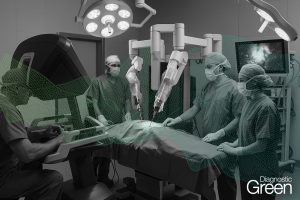Fluorescence imaging technology, specifically utilizing indocyanine green (ICG), has emerged as a valuable tool in laparoscopic hepatectomy. In particular, laparoscopic anatomical liver resection (ALR) has benefited from the implementation of both positive and negative staining methods. A case series study reported a success rate of 53% for the positive staining method, citing potential issues regarding the proper ICG dosage needed for accurate fluorescence. Thus, it is crucial to conduct research to investigate the optimal dosage for ICG-positive staining in clinical practice to maximize the benefits of this technique.
Among the 18 successful puncture cases, the first-stage evaluation of fluorescence intensity revealed 14 punctures with “strong” intensity and four punctures with “weak” intensity. In the second-stage evaluation, 13 cases demonstrated “clear” borders, while five cases exhibited “contaminated” borders. ROC curve analysis was performed to determine the optimal ICG dose for adequate fluorescence intensity and preservation of clear borders during dissection. The analysis indicated that the appropriate ICG dose for achieving optimal intensity was 0.028 mg/100 mL (area under the curve [AUC]: 0.893), while the dose that prevented contamination of fluorescence in non-target areas until after dissection was 0.083 mg/100 mL (AUC: 0.723).
Laparoscopic anatomical resection using the positive staining method requires an optimal ICG dosage of 0.028-0.083 mg per 100 mL of liver volume. By employing this methodology, more precise and safer laparoscopic anatomical resections can be conducted, thereby enhancing the safety of the surgical procedure for patients.




